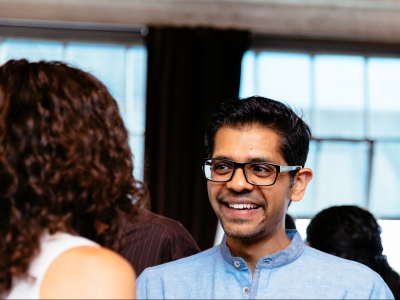Canada’s nonprofit and philanthropic sector is facing a major task of rebuilding and reinventing during the pandemic. This includes a fundamental reworking of our systems of care, developing radically different funding models for the sector, and addressing racial injustice and structural inequities, among other systemic changes.
Design stands out as a promising path to systemic and service innovation. Over the last 10 to 20 years, several fields have looked at Design as a means to support innovation capable of social change. Governments and societal institutions have turned to Design approaches to rethink public policies and services, because many longstanding approaches haven’t work and aren’t economically sustainable. For example, the Design Council, a charity in the UK, reflects the UK government’s understanding of the potential of Design for addressing economic and social needs, for building more inclusive places, and for informing public policy.
Designers’ approaches have changed as well. There are at least three main changes that are relevant.
1. Design for societal needs
Designers have redefined their focus from mainly products/technology to societal needs (i.e., design for interacting, design for sustainability, design for experiencing, and design for emotion). This switch was catalyzed by an understanding that the technological changes and innovations of society have profoundly changed society as well as ‘the user.’
2. Design for creativity
In addition, creativity became appreciated as a human quality, not as a feature of a selected group of people. So, too, did the importance and possibility of every person as being an autonomous subject. People are no longer recipients of products or solutions that designers and institutions provide to them. Rather, they are connected and interconnected; they have more access to knowledge and are often looking for means of being autonomous subjects in search of their own solutions to problems. For example, the phenomena known as the ‘maker movement’ emphasizes a person’s ability to create rather than merely consume, and ‘social innovation’ has become a trend, among others.
3. Design for innovation infrastructure
Emerging in the last decade within the Participatory Design field is ‘Infrastructuring,’ a design approach that involves an open, long-term and continuous process of creating infrastructure for innovation. These infrastructures can be both tangible and intangible – from spaces and tools, to knowledge and training, to the promotion of relationships. The open-ended infrastructure allows a variety of social actors to generate the change they need, and be autonomous agents of transformation.

Design approaches include collaborations between the private and nonprofit sectors, with a focus on the “user” as being more than a consumer. (Photo of farmers market is courtesy of Kyle Nieber and Unsplash.)
Collaboration is a key feature of these design processes
These days, a designer is one of many actors engaged in a design process; designers and users collaborate or co-design to generate solutions. Space is given to users — and to their voices, knowledge and expertise.
Design processes are based on an ecosystem perspective. Design solutions emerge from the resources available in an ecosystem of action, and from collaborations among its actors. In this way, designers create and promote the conditions for the individuals themselves to be autonomous agents of their own transformation.
What does this mean for philanthropy, charities and the nonprofit sector? It might inspire organizations to go beyond seeing themselves as providers of services with a focus on specific issues. It might promote the inclusion of their users as co-designers and co-producers in the design and constant updating of services. Or it might inspire an infrastructuring approach, so that groups pool resources and collaborate more.
In order to do all this, however, these organizations need to reinterpret their resources and ways of operating. They need to start or expand their participation in networks with other organizations, each one providing needed resources and developing collaborative relationships in an ecosystem. Finally, collaborating with their ‘users,’ nonprofits need to collectively envision and update future possibilities – and accept that they are only one of many actors in the process.
Chiara Del Gaudio is an Assistant Professor in the School of Industrial Design at Carleton University. She’s on LinkedIn and Twitter. Photo of mural in Montreal is courtesy of Mr. TT and Unsplash.
Sunday, May 9, 2021 in Leadership & Governance
Share: Twitter, Facebook
 By
By 


